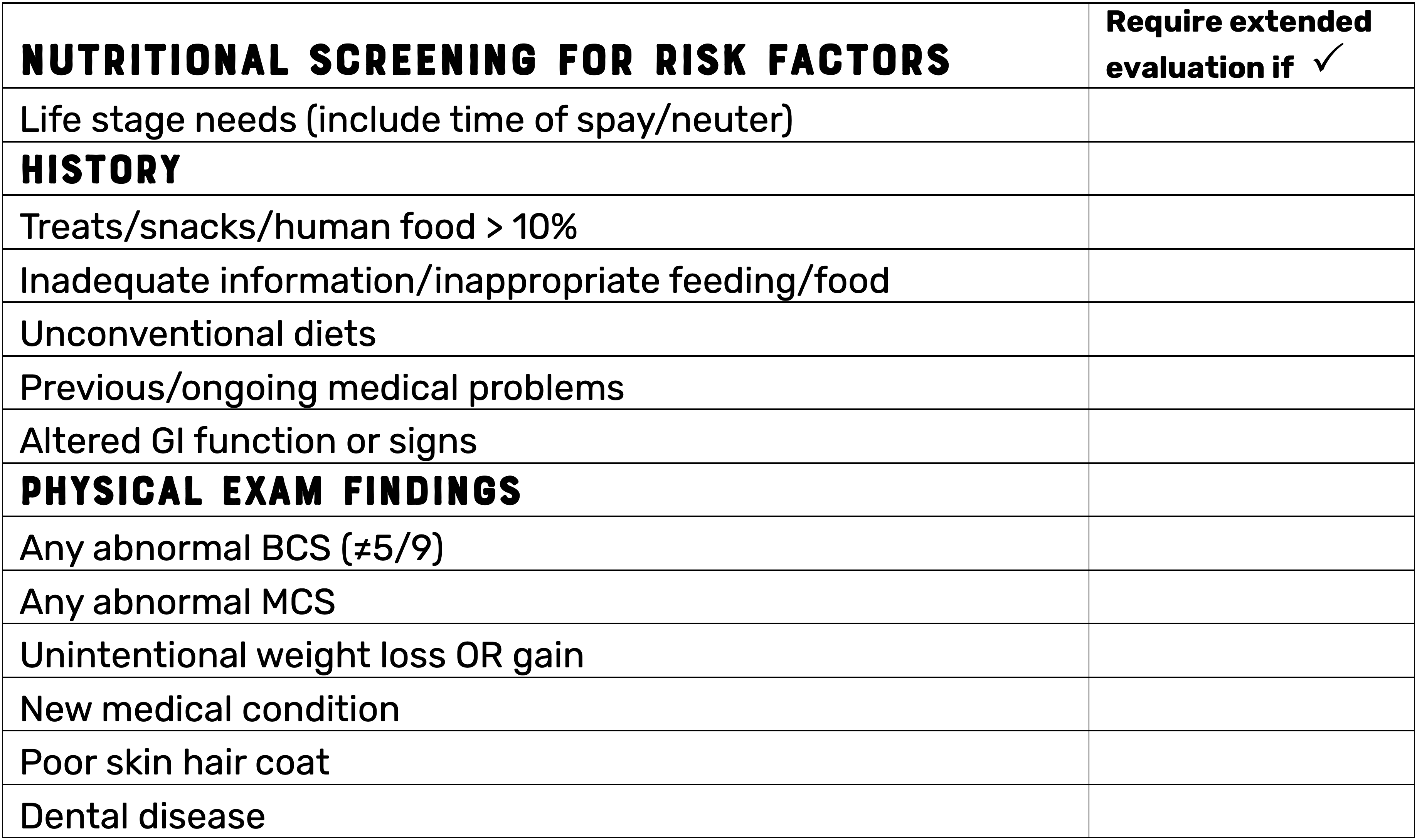
Physical Examination
A routine exam should be performed at each visit and the nutritional screening should include the health care team’s documentation of the pet’s body condition score (BCS), muscle condition score (MCS), and weight as part of the physical examination.
Weight
Ensure the patient’s weight is taken and documented in the medical record each visit.
Body Condition Scoring
BCS is an estimate of % body fat and allows health care team members to assess a patient’s fat stores, assists in evaluating weight changes, and provides a value that can be used in team communication.
A body condition of 15% to 25% fat is optimal; therefore, a pet with an ideal BCS has 15% to 25% body fat. A pet with a BCS indicating overweight has 26% to 35% body fat, and a pet with a BCS indicating obesity has more than 40% body fat. BCS is a tool that owners can use at home to monitor their pet.
Canine Body Condition Score Chart
Feline Body Condition Score Chart
Muscle Condition Scoring
Muscle condition score is assessed by visualization and palpation of the spine, scapulae, skull, and wings of the ilia. Muscle condition score is graded as normal, mild loss, moderate loss, or severe loss. Remember, animals can have significant muscle loss even if they are overweight and conversely, animals can have a low body condition score but have minimal muscle loss. Therefore, assessing both body condition score and muscle condition score on every animal at every visit is important. Palpation is especially important with mild muscle loss and in animals that are overweight.
Canine Muscle Condition Score Chart
Feline Muscle Condition Score Chart
The table below outlines the nutritional screening process. If nutritional risk factors are identified an extended nutritional assessment is recommended.
